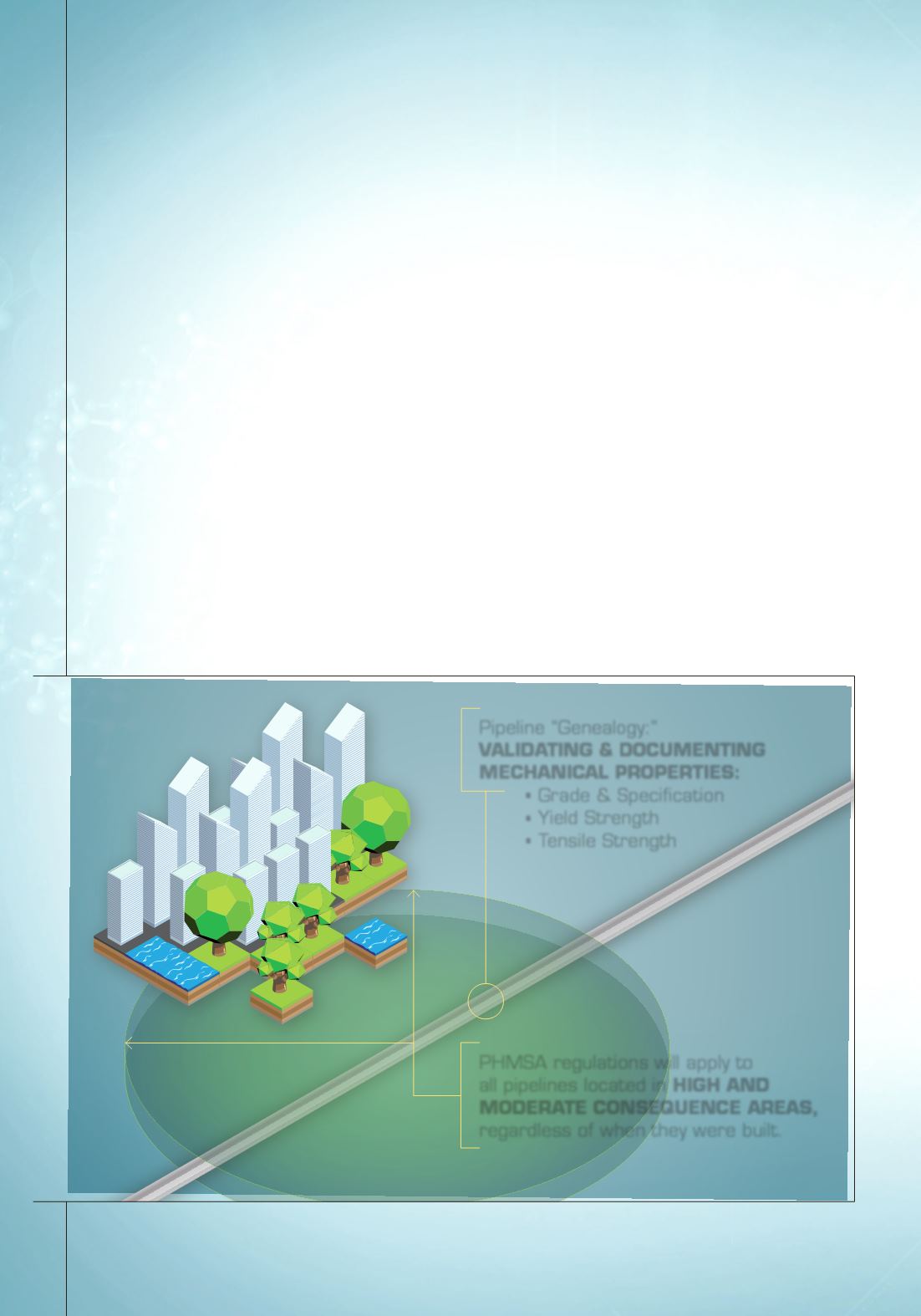

records exist, but the information is incorrect.
Soon, however, the days of missing and
incomplete materials records for gas transmission
pipeline operators in the United States will be over,
with hazardous liquids operators following shortly.
That’s because the Pipeline Hazardous Materials
Safety Administration (PHMSA) has regulation
pending that will require operators to verify the
records they use to establish and support the
maximum allowable operating pressure (MAOP) of
pipelines in high and moderate consequence areas
1
.
In addition, PHMSA has announced its intention to
eliminate a grandfather clause that has allowed gas
transmission operators to rely on historical data for
establishing the MAOP of pipe installed before 1970.
As a result, operators will have to perform what
is essentially a comprehensive pipeline genealogy
project in order to meet the upcoming regulations.
Included will be validating and documenting
the mechanical properties – such as construction
materials by grade and specification, yield strength,
and tensile strength – of all pipelines located in
high and moderate consequence areas, regardless of
when they were built.
But how will they find out what they don’t
already know?
Unlike curious family members, pipeline
operators can’t just search the industrial equivalent
of a genealogical database. But to get to the
information they need, there is an alternative as
unobtrusive as a DNA cheek swab: Non-destructive
positive materials identification (PMI) technology
used as part of a complete integrity verification
process (IVP).
A Call For ‘Traceable, Verifiable,
and Complete’ Records
Like any number of governmental regulations
that arose from a public safety concern, PHMSA’s
pending rules were motivated by an accident, and
a catastrophic one at that: A deadly explosion and
fire caused by the rupture of a gas pipeline in the
state of California.
In the United States, the National
Transportation Safety Board (NTSB) is among
the first on the scene to investigate the cause of
significant pipeline incidents as well as aviation,
railroad, highway, and marine disasters. During
I N N O V AT I O N S • V O L . V I I , N O. 1 • 2 0 1 5
PHMSA regulations will apply to
all pipelines located in
HIGH AND
MODERATE CONSEQUENCE AREAS,
regardless of when they were built.
Pipeline “Genealogy:”
VALIDATING & DOCUMENTING
MECHANICAL PROPERTIES:
.
Grade & Specification
.
Yield Strength
.
Tensile Strength
16
1
Visit
phmsa.dot.gov
for a criteria-based definition
of high and moderate consequence areas



















